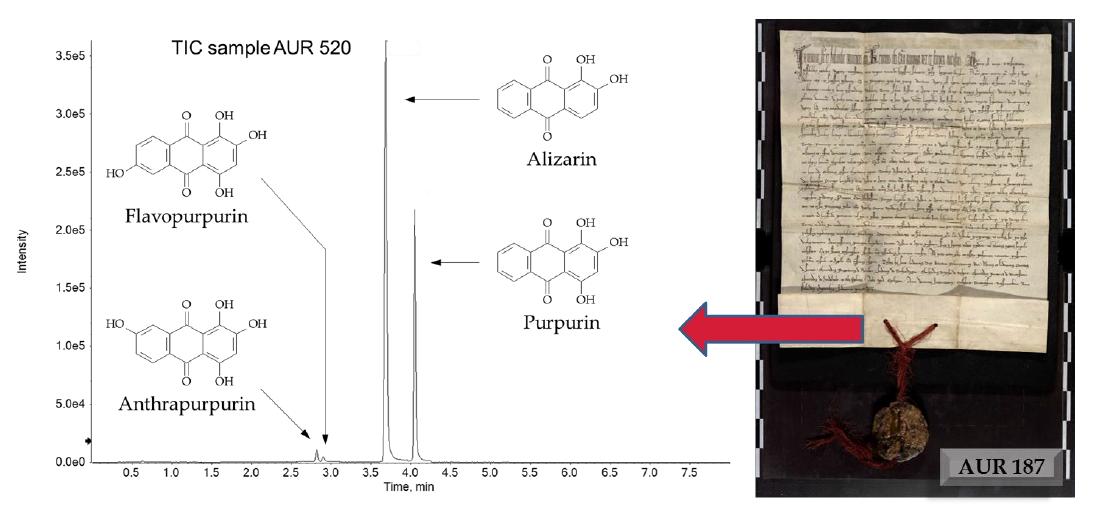The Privilegium maius is one of the most famous and spectacular forgeries in medieval Europe. It is a set of charters made in 14th century upon commitment by duke Rudolf IV, a member of the Habsburg family, to elevate the rank and the prestige of his family. These five charters, now kept at the Österreichisches Staatsarchiv in Vienna, have been subjected to a thorough interdisciplinary study in order to shed light on its controversial story. The charters are composed by pergamenaceous documents bound to wax seals with coloured textile threads. The present contribution concerns the characterisation of the inks used for writing and of the dyes used to colour to the threads: are they compatible with the presumed age of the charters? Though showing only a part of the whole story of the charters, dyes analysis could contribute in assessing their complex history from manufacturing to nowadays. The dyes were characterised with non-invasive in situ measurements by means of FORS and with micro-invasive measurements by means of SERS and HPLC-MS analysis. The results showed that the threads of four of the charters (three dyed with madder, one with orchil) were apparently coloured at different dyeing stages, then re-dyed in the 19th-20th century.

